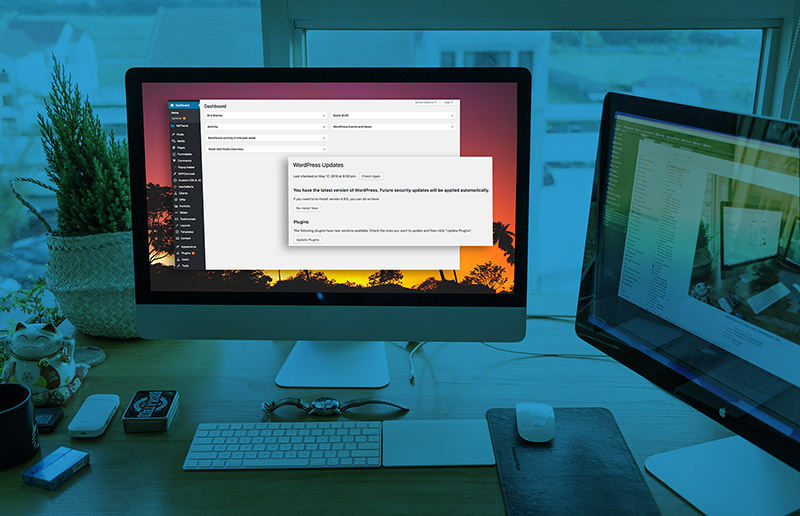As the owner of a WordPress website, you may be wondering how often you should update your website. There isn’t a one-size-fits-all answer, since large, busy websites require more maintenance than smaller websites. However, as a general rule, you should update your website at least once a month.
Why Updates are Important
When a website seems to be functioning correctly, you may wonder if and why you should update WordPress to the latest version or update plugins. Yes, you should do updates. Your website’s greatest strength, its open-source content management system, is also a vulnerability, making it particularly susceptible to errors and bad actors.
Developers are always working to improve security and functionality, so the latest version is the best and safest for you and your customers. Outdated software is a security risk and can adversely affect your user’s experience with your website.
It’s Easy to Check for Updates
After logging in to your dashboard, a red circle next to “Updates” lets you know updates are available. A click will provide more details and lead you through the update process.
Run a Backup First
Before beginning to perform website maintenance and updates, run a backup. Using one of the available WordPress backup plugins makes it easy to automate daily backups of your themes, uploads, plugins and database. If you haven’t done this yet, it’s important.
Hosting companies normally make it possible for you to backup your database and website files. Ensure that you’ll be able to restore any of your backups from the past 30 days.
What Other Website Maintenance Should be Performed?
Your website is constantly changing with each addition, deletion and update. Just as with your car, maintaining your website with a regular schedule can prevent many problems. If you wait until something breaks, fixes take longer than prevention. If your website is down, only you know how much that will cost you.
The following items should be included on your to-do list.
- Change All Passwords: Passwords are your first line of defense, so be sure to use strong passwords. Unfortunately, it’s possible for even the strongest passwords to be compromised without your knowledge. Change all passwords often, including admin, FTP or SSH and database. Consider using a password generator.
- Check Forms: Check all forms to be sure they are working as they should.
- Optimize Your Database: Unnecessary date can affect uploads, downloads, backup restoration, and performance.
- Performance Tests: Optimizing website performance isn’t a one-and-done. You need to run performance tests on your home page plus your most popular and important pages. Website changes can affect performance and slow down the site. This is bad for both your user’s experience and your website’s Google ranking.
- 404 Errors: Everyone hates 404/page doesn’t exist errors. Some are the user’s fault if they mistype an address. Other errors occur due to website changes. Find the 404 errors and fix the ones you can.
- Broken Links: Both external and internal links need to be checked periodically to be sure links work.
- SEO Audit: Review Google Analytics and your Google Search Console to search for content that isn’t converting. Perform an SEO audit of content and keywords with the goal of improving your search ranking.
- Review Security Logs: You may not know your website is being attacked until performance suffers and your rankings drop.
This is by no means a complete list of what needs maintaining on your website, but these are all important. Websites are inherently complicated and don’t do well if left unattended for too long. If you’re not sure you have the time or desire to do this yourself, consider outsourcing your website maintenance to BXP Creative.




